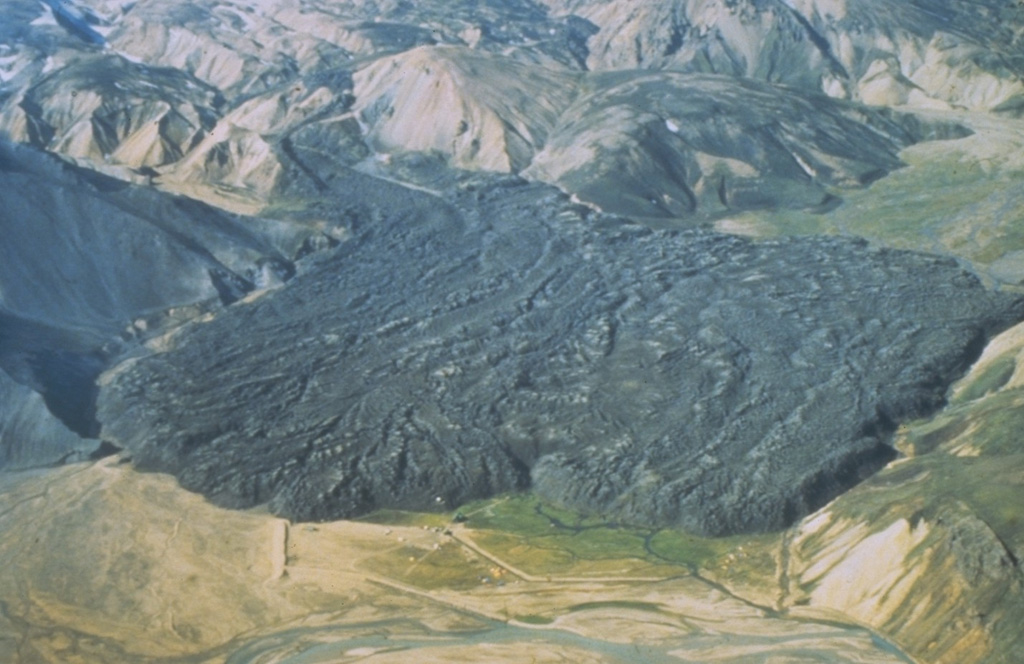Global Volcanism Program | Image GVP-05104

The viscous Laugahraun lava flow was emplaced in 1477 CE just inside the northern rim of Torfajökull caldera. This thick flow extends for about 2 km, and at its widest (left to right in this image), is about 1.3 km. Other small lava flows were produced at the same time as the Laugahraun lava flow: the Námshraun and Norðumámshraun lavas to the northeast just outside the caldera rim, and the Frostastaðahraun further north on the fissure system. The light-colored deposits surrounding the darker lava flow are rhyolitic volcanics.
Photo by Richie Williams, 1981 (U.S. Geological Survey).
![]() This image is made available as a Public Domain Work, but proper attribution is appreciated.
This image is made available as a Public Domain Work, but proper attribution is appreciated.
Keywords: lava flow

Torfajökull
